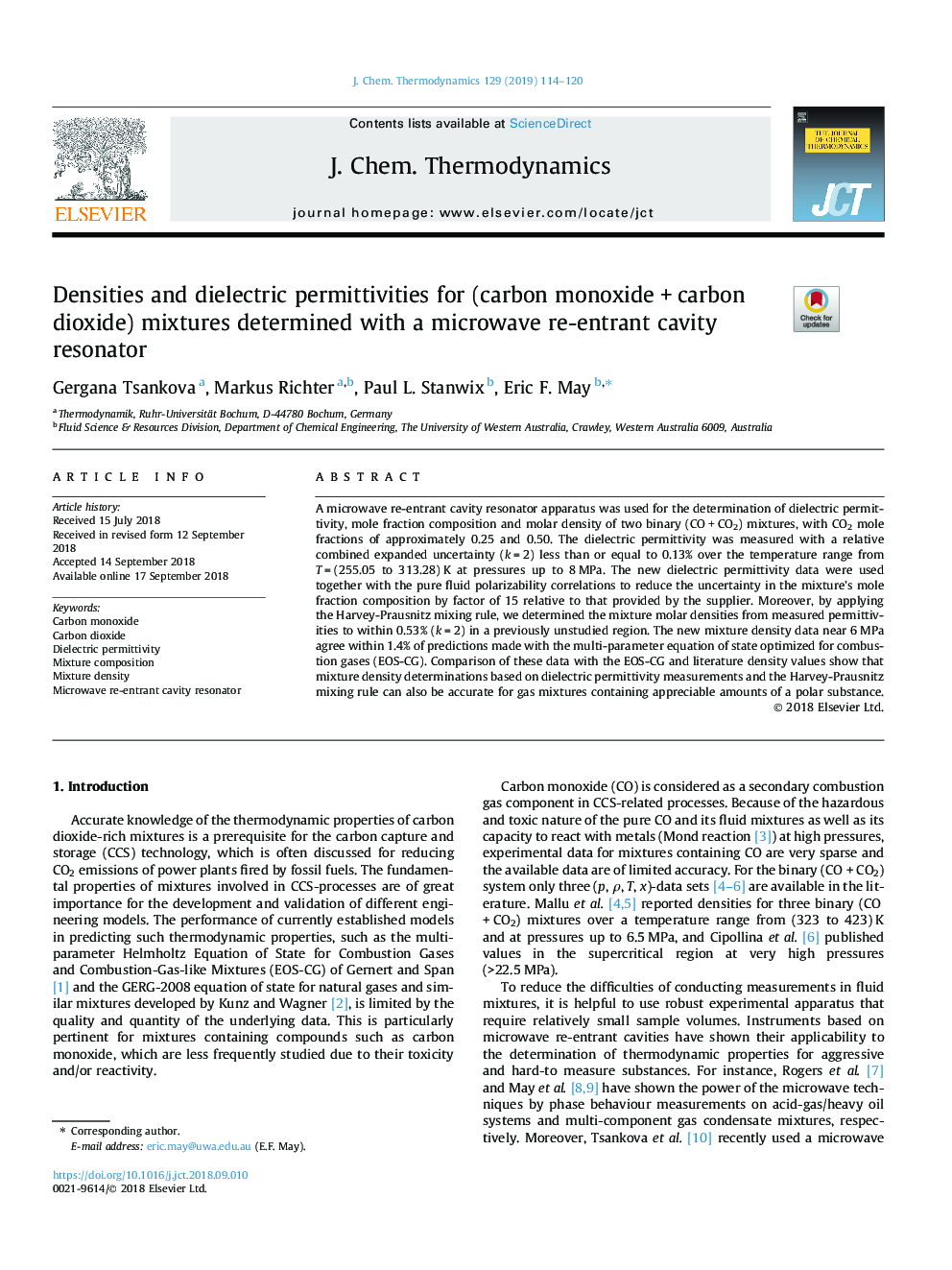| Article ID | Journal | Published Year | Pages | File Type |
|---|---|---|---|---|
| 11028250 | The Journal of Chemical Thermodynamics | 2019 | 7 Pages |
Abstract
A microwave re-entrant cavity resonator apparatus was used for the determination of dielectric permittivity, mole fraction composition and molar density of two binary (COâ¯+â¯CO2) mixtures, with CO2 mole fractions of approximately 0.25 and 0.50. The dielectric permittivity was measured with a relative combined expanded uncertainty (kâ¯=â¯2) less than or equal to 0.13% over the temperature range from Tâ¯=â¯(255.05 to 313.28)â¯K at pressures up to 8â¯MPa. The new dielectric permittivity data were used together with the pure fluid polarizability correlations to reduce the uncertainty in the mixture's mole fraction composition by factor of 15 relative to that provided by the supplier. Moreover, by applying the Harvey-Prausnitz mixing rule, we determined the mixture molar densities from measured permittivities to within 0.53% (kâ¯=â¯2) in a previously unstudied region. The new mixture density data near 6â¯MPa agree within 1.4% of predictions made with the multi-parameter equation of state optimized for combustion gases (EOS-CG). Comparison of these data with the EOS-CG and literature density values show that mixture density determinations based on dielectric permittivity measurements and the Harvey-Prausnitz mixing rule can also be accurate for gas mixtures containing appreciable amounts of a polar substance.
Related Topics
Physical Sciences and Engineering
Chemical Engineering
Chemical Engineering (General)
Authors
Gergana Tsankova, Markus Richter, Paul L. Stanwix, Eric F. May,
